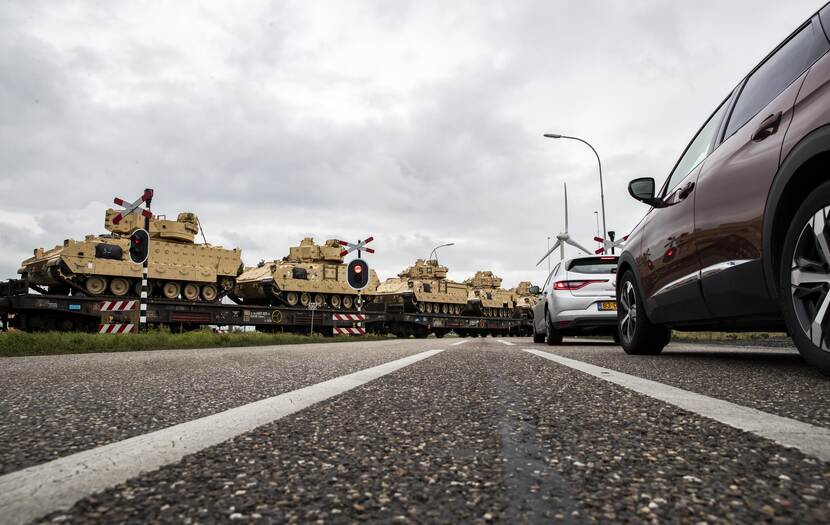Dutch government agrees on national military mobility plan
Military personnel transiting through the Netherlands in time of crisis should be able to do so as quickly as possible via 3 so-called multimodal corridors. These corridors are designated routes for military movements, with a minimal risk of delays. This is stated in the national military mobility plan, which was approved by the Dutch Council of Ministers today.

The plan deals with the importance of the Netherlands as a strategic military transit country. It describes the principle of the corridors, possible bottlenecks and solutions. “This really is a milestone that increases the striking power of NATO and the EU,” the Netherlands Minister of Defence Ank Bijleveld said. “It forms a comprehensive framework. Our allies can use it as a basis for their national plans. Indirectly, it is a joint plan, in the interest of the security of the Netherlands ànd Europe.”
Removing bottlenecks
Increased military mobility means addressing all issues that could delay military movements, from infrastructure such as bridges that are too low, to bureaucratic red tape. This includes authorisations for the transport of dangerous goods (ammunition) or the abundance of paperwork needed for borders crossings.
Increased military mobility means that military personnel and equipment can be deployed more quickly. Speed is a crucial weapon in military operations, and increasing it immediately makes NATO, the EU and their allies a more fearsome opponent.
Corridors
Under the national plan, the 3 corridors will be laid out in the coming years, geographically divided across the Netherlands. For security reasons, details will not be made public. In principle, all major transit and host nation support activities will take place along these routes, thus expediting and simplifying the planning process. The review of this process has now started by setting up the Territoriaal Operatie Centrum (Territorial Operations Centre), which will coordinate planning.
The corridors, with roads, railways and waterways, will be supported by 3 logistics hubs to be set up. Here, personnel and equipment are taken care of and, if necessary, can assemble. In addition, thanks to the plan, agreements can be made with local parties, and laws and regulations can be adapted for such things as ammunition transports.
The digital planning system ‘interactive Host Nation Support’ (iHNS), which was developed by the Netherlands, will also speed up the process. Partner countries can join at a later stage. “iHNS will replace 5 systems, saving mountains of paperwork and time,” Minister Bijleveld said.
Suitable for the largest and heaviest materiel
The corridors will be set up in accordance with the European military guidelines for infrastructure, which are designed to accommodate the largest and heaviest materiel. The ‘military mobility bottleneck analysis’ published last year showed that the Dutch infrastructure can deal with practically all transports, with the possible exception of a single bridge here or there that is not high enough. The excellent Dutch waterways network has no bottlenecks and therefore serves as a backup option. For robust and flexible military movements, however, more options must become available over time.
Military mobility is a prime example of a topic where civil-military cooperation is very important. For instance, agreements will be made with the Ministry of Infrastructure and Water Management and the Directorate-General for Public Works and Water Management. From now on, they will to the furthest extent possible include military requirements in civil infrastructure projects.
Leading role for the Netherlands
The Netherlands is an international leader in the field of military mobility, thanks to its logistical expertise and its significant role as ‘gate of Europe’ and military transit country for its allies. The Netherlands placed the topic high on the agenda of both the EU and NATO in 2018. This led to the PESCO Military Mobility project, in which all 25 participating EU Member States are taking joint steps to improve military mobility.